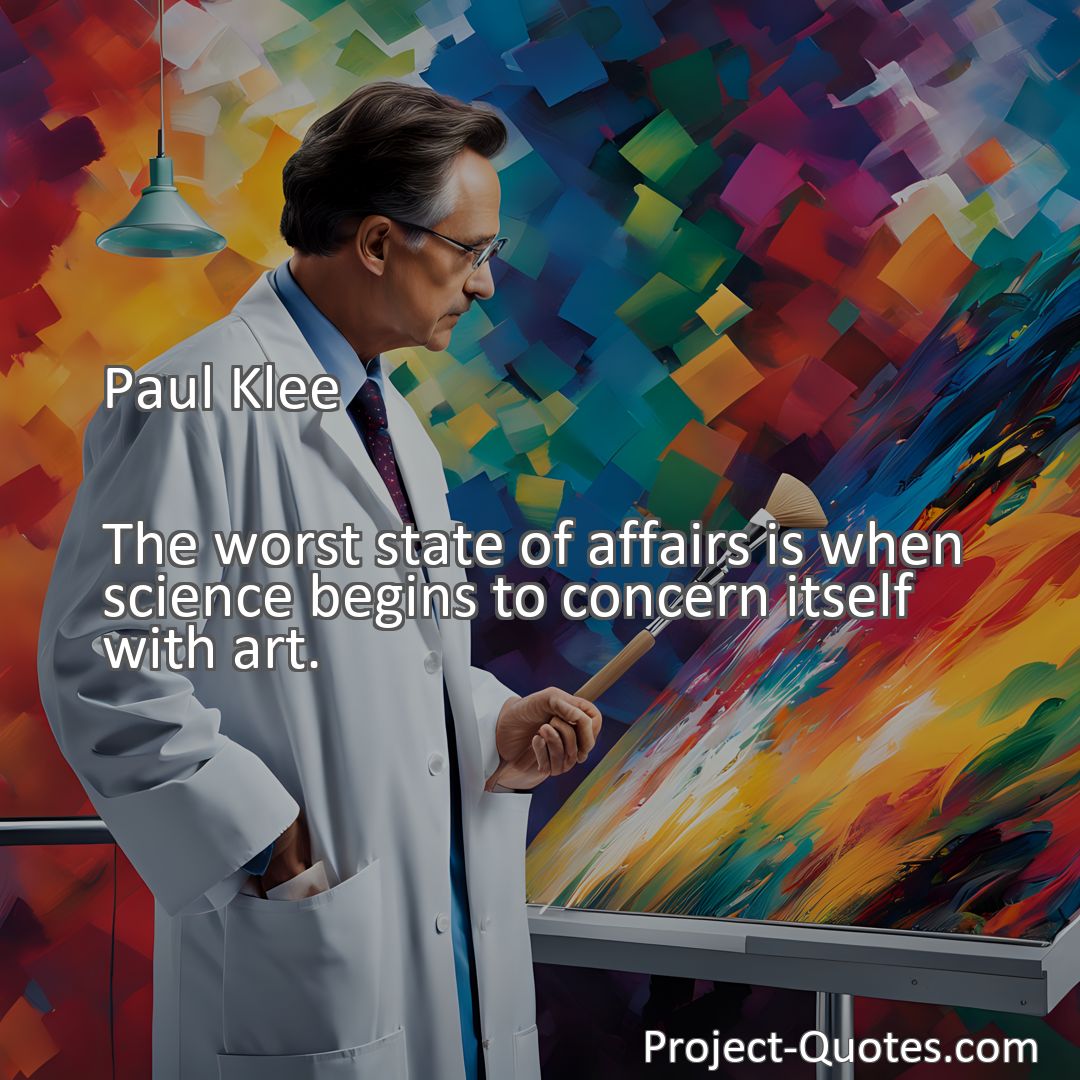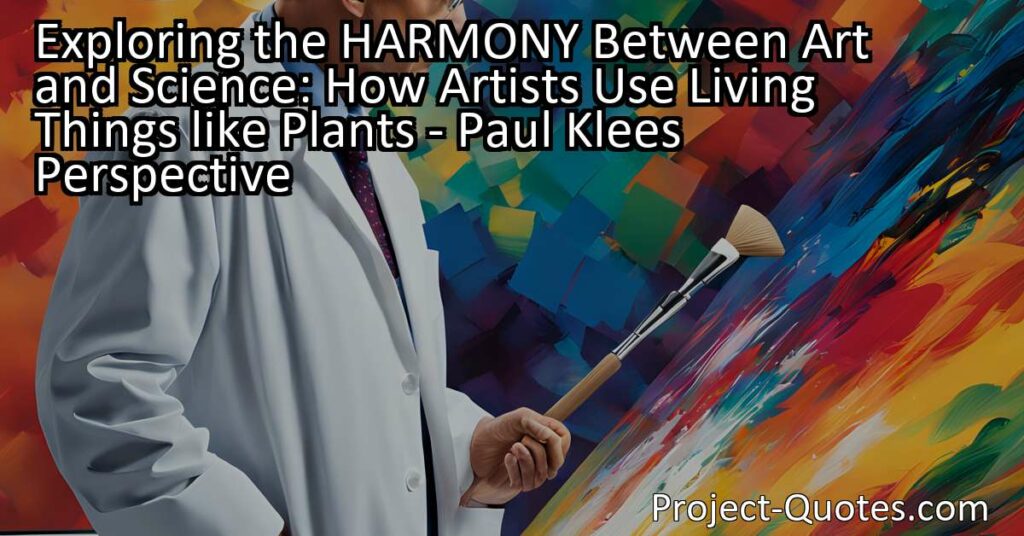The worst state of affairs is when science begins to concern itself with art.
Paul Klee
In the article “Exploring the Harmony Between Art and Science: How Artists Use Living Things like Plants – Paul Klee’s Perspective,” we learn about the relationship between art and science. While science relies on rules and formulas, art is about expressing feelings and creating something unique. Artists use living things like plants to create bioart, and when art and science work together, they can create something even more amazing. However, it’s important to remember that art should be free from strict scientific rules to maintain its magic and individuality.
Table of Contents
Meaning of Quote – The worst state of affairs is when science begins to concern itself with art.
Hey there, friends!
Have you ever heard of Paul Klee? He was a super cool artist who painted lots of colorful, creative pictures. But besides painting, he also had some interesting thoughts about art and science. One thing Klee said was, “The worst state of affairs is when science begins to concern itself with art.” That sounds pretty serious, doesn’t it?
So what did Paul Klee mean? Well, let’s dive into this idea together. When we look at art, it’s like peeking into someone’s imagination. It’s about expressing feelings, dreaming up all sorts of wild and wonderful things, and playing with colors and shapes just for the fun of it. Art doesn’t have to follow strict rules like science often does.
Now, science, on the other hand, is sort of like a detective story where everything has a clue, and there’s a logical explanation for each mystery. Scientists love to discover how things work, why they happen, and predict what might happen next. They rely on experiments, data, and evidence to learn about the world around us.
But here’s the thingart and science are like two sides of the same coin. In some ways, they overlap, and in other ways, they’re completely different.
Let’s imagine a world where scientists start poking into art, treating it like one of their experiments. They might say your beautiful sunset painting has the wrong blend of colors according to what a real sunset looks like. Or they might measure your sculpture to see if it’s perfectly symmetrical, even though you wanted it to look a bit wonky because that’s how you felt when you made it.
Sounds not so fun, right? That’s because art is not just about the perfect accuracy of how things look; it’s also about how they make us feel. It’s about your voice and your vision, which are both super important and unique.
If scientists came in and started saying that every brush stroke needs to be mapped out or that every song has to be composed with a formula, a lot of what makes art so specialits spontaneity and freedommight get lost. Imagine if every song on the radio sounded exactly the same, or if all the paintings in a gallery had to be exact copies of each other. It would be pretty boring, wouldn’t it?
Now don’t get me wrong, science is super important. It helps us cure sicknesses, build bridges and rockets, and understand the stars. But art? Art helps us to dream about where those rockets might take us. Art lets us feel the beauty of the stars, not just understand them.
It’s like if you have a birthday cake. Science is the recipe that tells you how to make the cake so it tastes goodhow much flour, sugar, and eggs to mix together. Art, however, is the fun part where you get to decorate your cake. You can choose the frosting color, sprinkle on some glittery decorations, and plop a giant cherry on topjust because you think it looks awesome.
Of course, the coolest part is when art and science work together in harmony. Sometimes, scientists do get inspired by art. They might see a painting of a magical land and start thinking about new ways to look at the world or solve problems. Artists are inspired by science too! They might learn about the stars and create a painting that feels like you’re zooming through outer space.
There are even special types of art, like digital art, where you need technology (which comes from science!) to create it. And there’s this fieldbioartwhere artists use living things like plants or even cells to make their art. So, sometimes mixing art and science can make both even cooler.
But Paul Klee warned us not to let science take over art completely. When it does, art might stop being this wonderful, free space where anything is possible. We could lose the stories, the dreams, and the feelings that art brings into our lives.
Think about the last time you made something just for funmaybe you doodled on the side of your homework or danced in your room. You weren’t thinking about rules or formulas. You were just expressing who you are. That’s the beauty of art that Paul Klee was trying to protect.
So let’s keep mixing paint on our palettes with freedom, not formulas. Let’s keep dancing to the beat of our own drums, not just to the rhythms calculated by machines. Science is vital, but so is art, and each should be celebrated for what they bring into our lives.
Remember that you, yes YOU, have the power to create art and experience science in your own way. Sometimes it’s okay to let your imagination wander beyond the edges of the page or to ask questions that don’t have answers yet. That’s how magical ideas are born, and that’s exactly what Paul Klee wanted us to remember.
I hope this quote inspired image brings you hope and peace. Share it with someone who needs it today!


